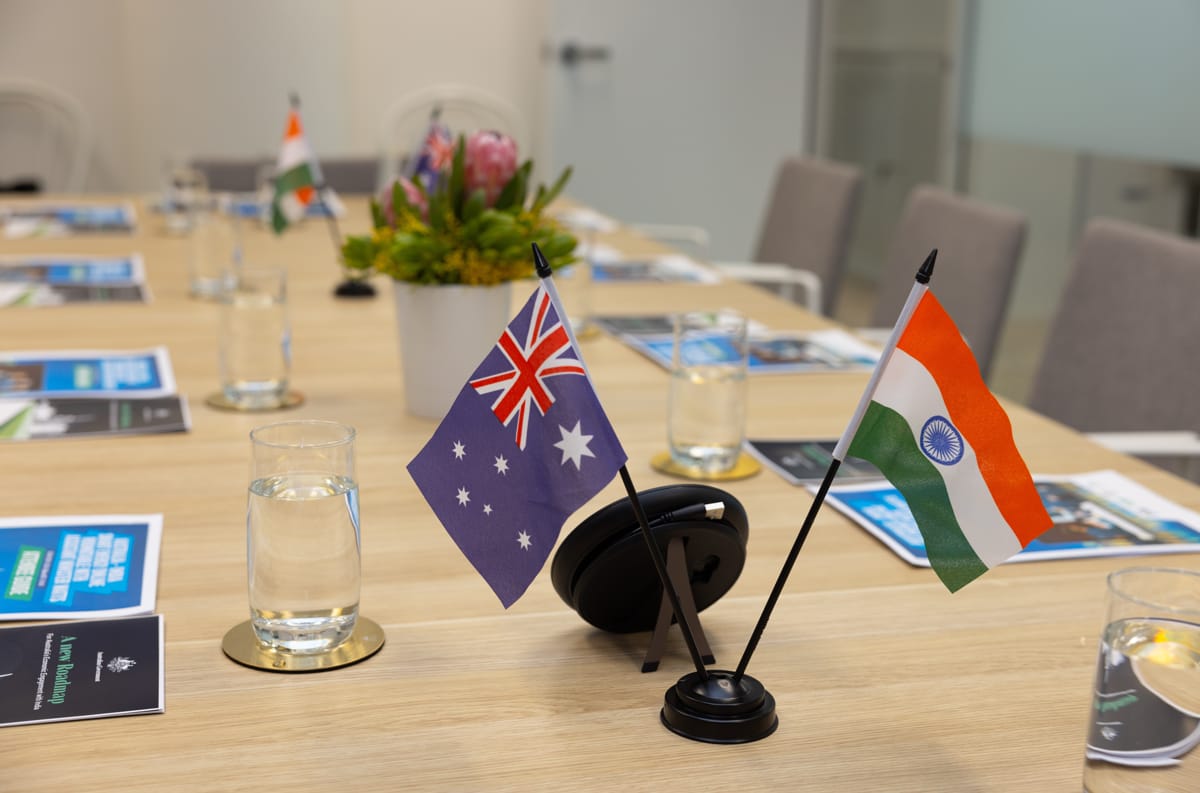Critical minerals – lithium, cobalt, copper, and other rare earths – have rising importance worldwide as the building blocks of the digital age and the transition to renewable and clean energy. Solar panels, wind turbines, and electric vehicles all depend on these minerals, as do core elements of defence and telecommunications systems. The smartphone on which you’re probably reading this article relies on approximately 70 elements from the periodic table, uses rare earths such as yttrium to light up the colourful display, and a lithium-ion battery to power it.
Global demand for critical minerals is estimated to be worth as much as US$378 billion. So, countries are understandably competing to fill the demand gaps across the value chain.
Australia and India could together create a powerful new pathway for stronger bilateral cooperation in a sector that underpins the global green transition. On 23 July, India announced a “Critical Minerals Mission” in its annual budget. This follows a new report by Australia’s scientific agency, the CSIRO, into the significant economic and geopolitical opportunities for Australia owing to its large resource endowments of critical minerals and growing global demand.
In India, “missions” play a special role in government bureaucracy – driven by clear objectives, political support, dedicated budget allocations, and heightened accountability.
The advantage of enhancing an India-Australia partnership would be to mitigate the risk in critical minerals supply chains. There are environmental and social challenges to overcome, but another challenge is geopolitical – the present production is highly concentrated with China, making it vulnerable to disruption. For example, a fishing trawler dispute between Japan and China in 2010 led to Beijing cutting off rare earth exports to Tokyo, impacting its high-tech sectors and serving as a wake-up call to import-dependent countries worldwide.
India’s Critical Minerals Mission provides a new platform to strengthen existing cooperation with Australia in this sector and avoid potential bottlenecks in global supply chains. The mandate is to increase India’s domestic production, boost recycling efforts, and secure new sources of critical minerals essential for clean energy and national defence.
In India, “missions” play a special role in government bureaucracy – driven by clear objectives, political support, dedicated budget allocations, and heightened accountability. As a result, missions frequently outperform on outcomes. A recent example of this is the India Semiconductor Mission, which played a key coordinating role between global industry, governments, Indian ministries, and states to bring in $18 billion of project commitments within three years of its launch.

Leveraging this latest mission offers the chance to capitalise on the growing critical minerals momentum in the bilateral relationship. In 2023, an Australia-India Critical Minerals Investment Partnership was announced, where mining ministers from both countries identified five target projects for potential joint investments. Indian mining companies are also in talks with the Western Australian government to explore investments in the mineral-rich state. Australia and India are also part of multilateral arrangements such as the Mineral Security Partnership, a US-led security dialogue with 15 members, that aims to bring together trusted partners to secure critical mineral supply chains. The 2023 Quad Leaders Summit held in Japan also saw the launch of the Clean Energy Supply Chain Initiative to “de-risk” global critical mineral supply chains from overconcentration.
The benefits of an Australia-India partnership are clear. Australia’s burgeoning critical minerals sector will benefit from India’s economies of scale. India gains from a reliable supplier in Australia in its domestic ambitions for manufacturing-led growth in sectors such as electronics, semiconductors, electric vehicles, solar and green technology. Australia can also help India gain technical expertise in mining projects, and build an ecosystem that adheres to global standards of environmental, social and governance management. This cooperation could help Australia meet its goals of becoming the “major powerhouse of the world in critical minerals by 2030” set out in its Critical Minerals Strategy.
The Indian Critical Minerals Mission has the potential to supercharge the engagement of the Australian government, industry and researchers with their Indian counterparts. This can be especially beneficial for a capital-intensive sector that requires sustained government-to-government links and streamlined regulation. The current alignment in the interests of Australia and India is an opportunity to be harnessed. This is not only important for both economies strategically, but also essential to building greener and cleaner economies of tomorrow.

